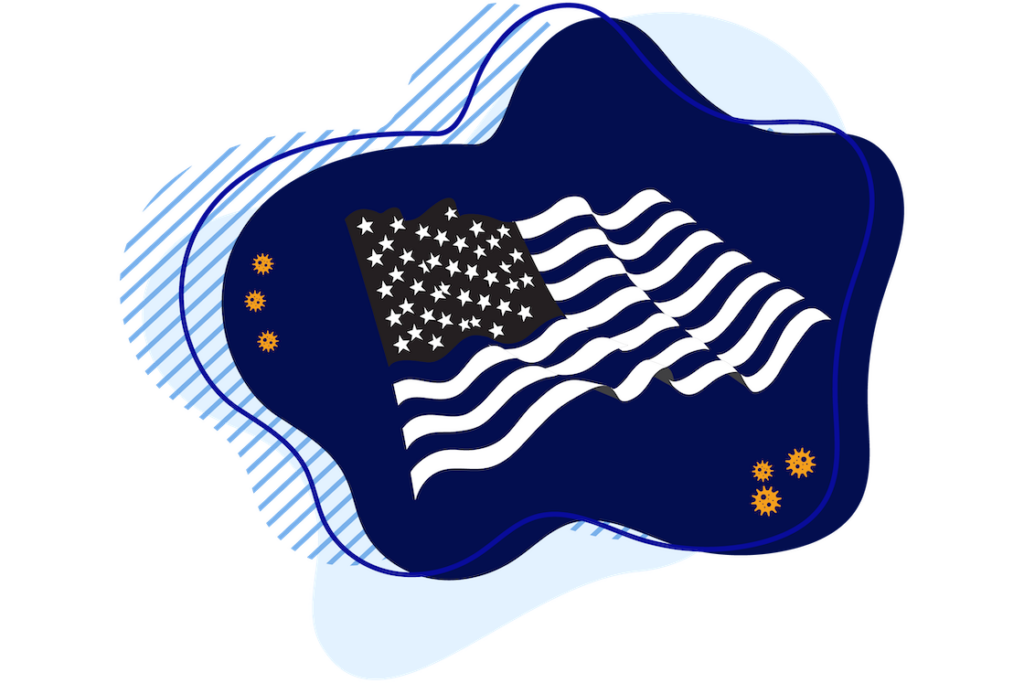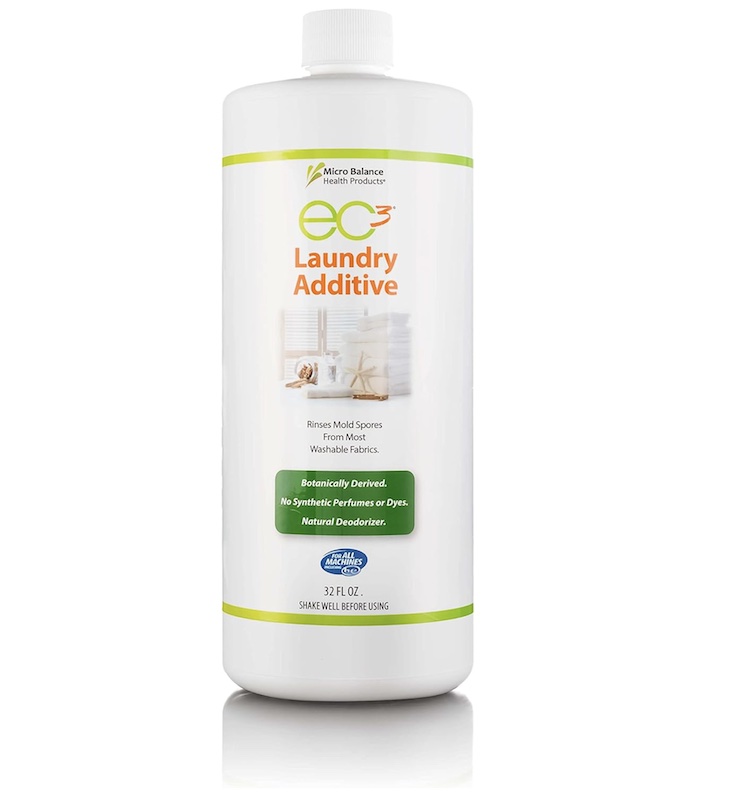Flags are one of the most sacred and revered physical symbols of the power and heritage of any country.
They hold a unique place in the minds and hearts of a country’s people.
Mold and mildew can affect the appearance of a country’s flag in such a way that it looks bad, or even violates a country’s customs for the use and display of its flag.
Mold isn’t just ugly. It’s also damaging.
Mold can “burn” holes through a flag, since a flag’s fabric is quite thin and porous.
Whether your flag is natural or synthetic, here’s how to prevent it from molding, and remove mold from it when it does grow.

What flags are most likely to mold?
- Flags made of natural fabrics will mold more often than flags made of synthetic fabrics.
- Flags that are left damp (such as in storage) will mold faster than flags that are kept dry.
- Flags that are dirty will mold faster than flags that are clean.
- Most flags today are made of nylon or polyester, two synthetic fabrics that aren’t prone to mold growth. But, given the right conditions, even synthetic materials can grow mildew or mold.
Flags made of natural fibers such as cotton, linen, silk, and wool are the most likely to grow moldy, but even flags made of synthetic materials may grow a layer of mildew on top of them, or grow mold on them that will eventually destroy the integrity and usability of the flag.
How to prevent mold on a flag
Preventing mold growth on a flag starts with knowing what causes mold in the first place.
In order to grow, mold requires four things:
- Time for growth (24-48hrs)
- Mold spores (“seeds”)
- Moisture or water (even including elevated humidity where no wetness is obvious)
- An organic surface or substrate of almost any kind—fabric, paper, wood, dust, etc.
- (Bonus: Sunlight kills mold and its absence encourages mold growth.)
Given these four things, mold will eventually grow.
If these conditions are present in or around a flag, it is only a matter of time before mold growth occurs.
Since most flags fly outside and are bathed daily in sunlight, mold typically has a hard time growing on them.
But take that flag and place it in storage while still slightly damp or moist, and mold will likely grow on it.
Steps to prevent a flag from molding:
- Keep it dry, and ensure it is fully dry before storing it.
- Keep it clean, and wash it before storing it.
Four ways to clean a moldy flag
0. Prepare to wash a moldy flag
- Washing machine: Flags of polyester and nylon can be put in the washing machine.
- Hand wash or Dry clean: Flags of wool, cotton, and other natural fibers and fabrics should not be put in a washing machine but should be hand cleaned or dry cleaned.
- Wear PPE when appropriate: Whenever you’re working closely with mold, the first thing you’ll want to do is assemble the proper PPE: Rubber gloves, safety goggles or glasses, and a face mask.
1. Hand Wash It With Soap and Water
If you’re dealing with a mild mold issue on your flag, it’s possible that this will be the only step you need to use. Either way, though, it’s a great place to start.
What you’ll want to do first is take a soft-bristled brush and gently scrub the affected areas of the flag. That should remove a good portion of the visible mold spores.
After that, your next move should be to pre-soak the flag (or, if the mold growth is small, only the affected area) with cold water.
Next, mix a solution of mild laundry detergent and warm water in a bucket, then use that solution to wash the moldy areas of the flag.
At this point, if you’ve caught the mold growth in its early stages, the fungus may be entirely gone. However, if you can see or smell that it’s still present or you simply want to be thorough, you should move on to the next step.
2. Launder it With a Mold-Killing Agent: EC3 Laundry Additive
- Use machine’s gentle cycle.
- Use cool water; or warm water only if stubbornly dirty. Don’t use hot water.
- Add EC3 laundry additive to machine.
- Periodically check machine to ensure the flag’s colors are not bleeding.
- Tumble dry on low setting, or hang dry outside on a clothes line.

When you’ve got a fairly significant or persistent mold problem on your flag, you can follow up on the detergent bath by using a store-bought mold-killing cleaner on the fabric.
There are a variety of effective brands you can use, but what’s important is that you use one that’s safe for use on colorful fabrics. After all, the last thing you want is to ruin the colors on the Star-Spangled Banner.
EC3 is one of the better mold removing laundry additives and it is available on Amazon. Simply add the right amount of product into the washing machine you’re cleaning the flag in.
With most mold-killing cleaners, there should be instructions on the bottle for what kind of cleaner-to-water ratio you should use for your solution. Once you’ve made your blend, start by wetting the affected area of the flag with clean water, then use a sponge or soft-bristled brush to gently apply the solution to the moldy sections.
Next, let the mixture sit on the flag for at least 15 minutes before once again going over the area with a brush or sponge. Finally, rinse the flag with cold water and hang it outside in the sun to thoroughly dry.
3. Spot Clean it With Distilled White Vinegar
In most cases, the first two steps of the process should be enough to eradicate the mold growth from your flag. However, if the fungus has already had time to expand and dig itself into the flag when you start the cleaning process, it may take a bit of extra effort and persistence to get rid of it. If you finish washing the flag with your mold-killing agent and can tell that the problem is still present, using a white vinegar solution may do the trick to finally nip it in the bud.
The best way to do so is to fill a spray bottle with equal parts water and white vinegar; remember, it’s very important that you use white vinegar and not apple cider vinegar. Thoroughly douse the remaining mold spots with the solution, scrub it gently with a soft-bristled brush, and rinse it with cold water. Finally, let the flag sit out in the sun once again, until it’s completely dry. If you realize that there’s still some mold hanging on for dear life after this process, you can always repeat the step as many times as is necessary to eliminate it.
4. Dry Clean the Flag
Dry cleaning is usually the best way to clean a flag but not all flag fabrics can be dry cleaned. Polyester can be, nylon can not be. If you do choose to dry clean a flag, spot-clean the mold off of it before sending it to a dry cleaner. To do so, use distilled white vinegar, or diluted bleach on the white stars and stripes only.
If you can’t remove the mold
Unfortunately, there may be certain scenarios in which you’re simply unable to fully remove the mold stains from your flag.
Unfortunately, the longer mold is left to linger and flourish on an organic surface, the more likely it is to destroy the surface material itself—whether that be drywall, a piece of clothing, or a country’s flag.
So in the worst cases of mold and mildew, replacing a flag may be the best option once the other cleaning methods listed here (soap and water, distilled white vinegar, EC3 laundry solution, and dry cleaning) have been tried.
If the flag is irreplaceable to you due to sentimental value, you’ll want to use one or more of the mold removal options listed here, and then consider very carefully spot-bleaching any mold stains off of the white strips and stars of the flag. To do so, dilute the bleach so that it is strong enough to whiten the mold and mildew stains that you apply it to, but not strong enough to destroy or burn through the flag’s fabric.
It’s important here to understand than you’re not using bleach to kill the mold or mildew, but are using it after you’ve already addressed the mold itself and are not trying to remove and whiten any stains left behind by the mold and mildew.
A professional mold remediator may have some input for your flag specifically, but in most cases you will be much better off going to a flag restoration expert—not a mold remediator.
The last option you’ll have is to let the stains remain, and then avoid gettign the flag wet in the future. If it does get wet, just be sure it dries fully before being stored in an enclosed space, or folded up.
A flag that gets wet while flying should have enough air flow, time, and sunlight to dry on its own without ever growing moldy. Flags mold when they are stored before being given a chance to dry fully. A partially sealed package—such a plastic bag, cardboard box, or drawer—that restricts air flow will increase the odds of a flag molding, as will humid environments.
Otherwise, though, your best option may be to cut your losses and replace the flag.
[If you intend to get rid of an American flag, burning it is advised: “(k) The flag, when it is in such condition that it is no longer a fitting emblem for display, should be destroyed in a dignified way, preferably by burning.” – United States Code. You can also bring it to an organization that accepts old flags for proper disposal, such as a police station, the Boy Scouts and Girl Scouts, and Veterans organizations.]
Prevent mold from growing on a country flag?
If you leave your flag outside for extended periods, there’s always a chance that fungus will start to grow on it. That said, there are measures you can take to reduce the odds or, at the very least, ensure that you catch any mold growth as early as possible.
Primarily, you can make a point to regularly check and clean the flag. By checking it periodically, you can help guarantee that mold will never have a chance to expand significantly without you noticing it.
By cleaning it, you can prevent dirt and contaminants from accumulating and digging into the fabric, which will make it less likely that mold takes a foothold.
Additionally, if you ever put your flag into storage, you can decrease the odds of mold growth by making sure it’s entirely dry before you fold it and tuck it away.


